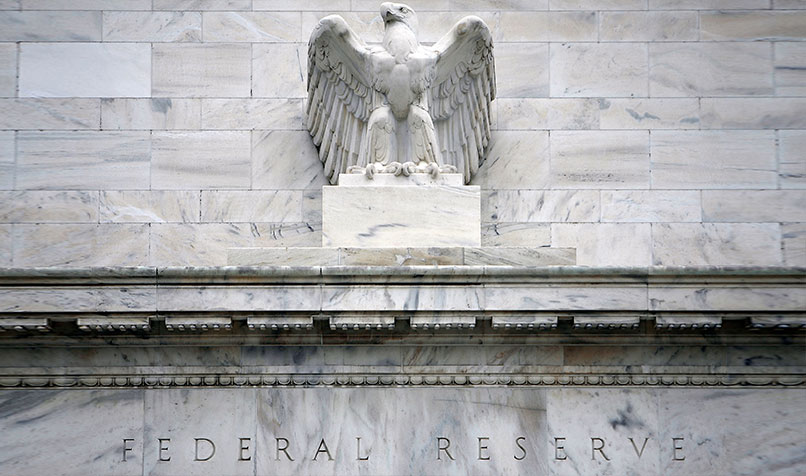Loading component...
At a glance
- In “normal” economic conditions, central banks rely on rate changes to manage economic performance and meet policy objectives.
- The unprecedented challenges of a pandemic have led central banks to pursue more radical alternatives such as quantitative easing and bond purchase programs.
- As global economic recovery starts to gain momentum, new threats are emerging, including inflation, necessitating a tricky balance between the use of conventional and unconventional monetary policy.
By Gary Anders
Under so-called normal economic conditions, most central banks operate in the conventional monetary policy dimension. In other words, they largely use changes to official interest rates as their primary lever to manage domestic economic conditions and meet their policy objectives.
Changes in rates affect the cost of borrowing, savings returns, the exchange rate, asset prices and consumer spending, which, in turn, all impact economic activity.
To ease the pressure on households and businesses caused by COVID-19, central banks moved swiftly during 2020 to cut their official interest rates down to record low levels.
However, using conventional monetary policy was never going to be enough on its own. Central banks needed to take much more drastic action to avert economic disaster. Most have turned to what is known in economic terminology as “quantitative easing” (QE).
On the horizon
Faced with the unprecedented events brought on by the escalating pandemic, including massive job losses stemming from forced business closures, governments around the world moved into QE mode.
This included financial aid and other economic stimulus programs on a massive scale, to increase money supply back into their economies. In order to fund these vast fiscal programs, central banks globally began buying trillions of dollars of risk-free treasury bonds issued by their own governments.
These central bank bond purchase programs are still continuing in many countries, including Australia, at a rate of tens of billions of dollars a month, although they are gradually being wound back.
In the meantime, new economic threats are emerging as the global economic recovery gains momentum. These are most notably in the form of rising inflation rates in advanced and emerging economies, driven by increased demand, supply shortages and rising commodity prices.
In fact, not only has the inflation “genie” escaped from its bottle as business and consumer spending levels have soared, now that it’s out, it may be difficult to bring it back under control.
These factors are advancing the prospect that central banks will start shifting their conventional monetary policy levers again by lifting official interest rates.
On alert

Getting the right balance will be critical in order to avoid derailing the global economic recovery.
“Policymakers must walk a fine line between remaining patient in their support for the recovery and being ready to act quickly,” say Francesca Caselli and Prachi Mishra, International Monetary Fund (IMF) economists, in a recent blog post.
“Even more importantly, they must establish sound monetary frameworks, including triggers for when they would reduce support for the economy to rein in unwelcome inflation.
“Authorities must be alert to triggers for a perfect storm of price risks that could be individually benign, but, when combined, may lead to significantly more rapid increases than predicted in the IMF’s forecasts.”
"Policymakers must walk a fine line between remaining patient in their support for the recovery and being ready to act quickly. Even more importantly, they must establish sound monetary frameworks, including triggers for when they would reduce support for the economy to rein in unwelcome inflation."
In this context, some believe the use of monetary policy as an economic tool has effectively reached its limits.
“The Reserve Bank of Australia’s [RBA] previously powerful cash rate tool is already near zero, and is expected to be there for quite some time,” says Paul Bloxham, HSBC’s chief economist for Australia and New Zealand.
“Very loose monetary policy settings are starting to cause other problems, including a housing boom that now requires tighter prudential settings.
“At the same time, growth is being primarily supported by fiscal policy – which has made sense during the pandemic. But it is also increasingly clear that more fiscal support will be needed to help the RBA achieve its inflation target.”
A new economic crisis?
Walking the fine line between the use of conventional and unconventional monetary policy measures for economic support, without going too far one way or the other, is a delicate balancing act for central banks.
A “global readjustment process” could be looming as a result of the expansive policies central banks have needed to undertake, notes Dr Carmelo Ferlito, chief executive of the Malaysia-based Center for Market Education.
Ferlito says the combination of low interest rates and fiscal monetary policies will lead to higher inflation. “The inflationary effects created by expansive policies would become very evident when the economy restarts, which could undermine the stability of the recovery,” he says.
“When inflation rises to the point of being dangerous, and the government support will be withdrawn, then businesses will collapse, and with it there will be damages to the connected businesses.”
Inflation and tapering

Dr Shane Oliver, AMP Capital’s head of investment strategy and chief economist, says a permanent increase to significantly higher inflation will mean lower price-to-earnings multiples for assets.
“However, while the surge in global money and fiscal stimulus poses the longer-term risk of higher inflation, what we are seeing now looks mostly due to distortions to global supply and demand caused by the pandemic.
“In the pre-COVID-19 world, the global supply system was a very finely tuned and highly efficient machine. COVID-19 threw it off with outbreaks (people can’t go to work) and their response (enhanced unemployment benefits encouraging people not to work) causing disruptions to production, and demand swinging to goods from services.
“All of which is showing up in today’s problems and spikes in, particularly, goods price inflation.”
Oliver says that, while central banks are “heading towards the exits from ultra-easy money”, with some moving faster than others, we are a long way from the sort of tight monetary policy that brings economic cycles and bull markets to an end.
“Some central banks have already started to raise rates, but those that have seen inflation below target in the post-GFC [global financial crisis] period are lagging, as they are wary of jumping at shadows and ending up with inflation back below target again,” he says.
These include the US Federal Reserve Bank, Reserve Bank of Australia, Reserve Bank of New Zealand, European Central Bank and the Bank of Japan.
Oliver adds, however, that although many central banks have already slowed their bond buying programs, “tapering” is not the same as tightening monetary policy, because cash is still being pumped into economies, just at a slower rate.
The need for continued support
The Organisation for Economic Co-operation and Development (OECD) has warned that macroeconomic policies need to remain
supportive to ensure a “complete and durable” global recovery in a report titled Keeping the Recovery on Track.
“Monetary policy is still very accommodative in the major advanced economies, as appropriate, until there are clear signs of durable progress towards medium-term policy objectives,” the report says.
"When inflation rises to the point of being dangerous, and the government support will be withdrawn, then businesses will collapse, and with it there will be damages to the connected businesses."
“Key steps towards eventual normalisation should be sequential, starting with removal of emergency measures to ensure well-functioning financial markets, as has already begun, an eventual stabilisation of central bank balance sheets (by only reinvesting the proceeds from maturing assets), and subsequently increases in policy interest rates.
“Such steps should be well communicated and state-dependent, guided by financial conditions, sustained improvements in labour markets, signs of durable inflation pressures and the support being provided by fiscal policy.”
COVID-19 and modern monetary theory

The fiscal measures taken by governments globally to pump money into their economies during the COVID-19 crisis have, largely, been necessary and effective.
“It saved us from a depression,” says Professor Bill Mitchell, chair in economics at the University of Newcastle and director of the Centre of Full Employment and Equity. “The fiscal expansion saved us from a massive collapse in economic activity.
“Could it have been more?”, he asks “Much more. It could have been 4 per cent to 5 per cent more of GDP, and you would have had fewer people losing their jobs and their incomes.”
More to the point, Mitchell says currency issuing countries such as Australia could have gone about things a different way, because they have the ability to print money whenever they need to in order to provide greater economic support and reduce unemployment levels.
That is a central pillar of Modern Monetary Theory (MMT), a macroeconomic framework that Mitchell has helped develop, which challenges conventional economic thinking.
MMT claims that spending by wealthy, stable countries that use currencies backed by their own governments is not operationally constrained by revenues from taxes or other sources.
Mitchell also says that, rather than being an unconventional monetary policy tool, government spending to support economic stability and growth should be the mainstream policy.
Mitchell says that, instead of being a more effective approach, policy movements in interest rates designed to either increase or decrease spending levels in the economy are highly ineffective.
“This period of monetary policy dominance has only been around for 30 to 40 years,” he says. “The longest tradition in recent history has been that fiscal policy has been used to maintain full employment.
“The idea that the cost of funds is the only factor businesses take into account when making investment decisions is just not evidence based.
“Obviously it’s one of the factors that businesses take into account, but they also take into account expectations of earnings and the state of the sales environment and longer-term projections, especially with large-scale investments in heavy industry, for example.”
The large-scale bond buying programs around the world as a result of COVID-19 are inefficient, Mitchell says, because they effectively amount to one arm of government buying the other’s debt.
“The Reserve Bank has bought about 92 per cent of the Australian Government’s debt issued since February last year,” he says.
“So, in effect, the government owns its own debt, and the RBA [Reserve Bank of Australia] is getting interest payments from the Treasury, and then each year it pays the Treasury back its dividends.
“And so, it’s just the government paying itself back these rewards – it’s just accounting stuff and not anything functional at all.”

